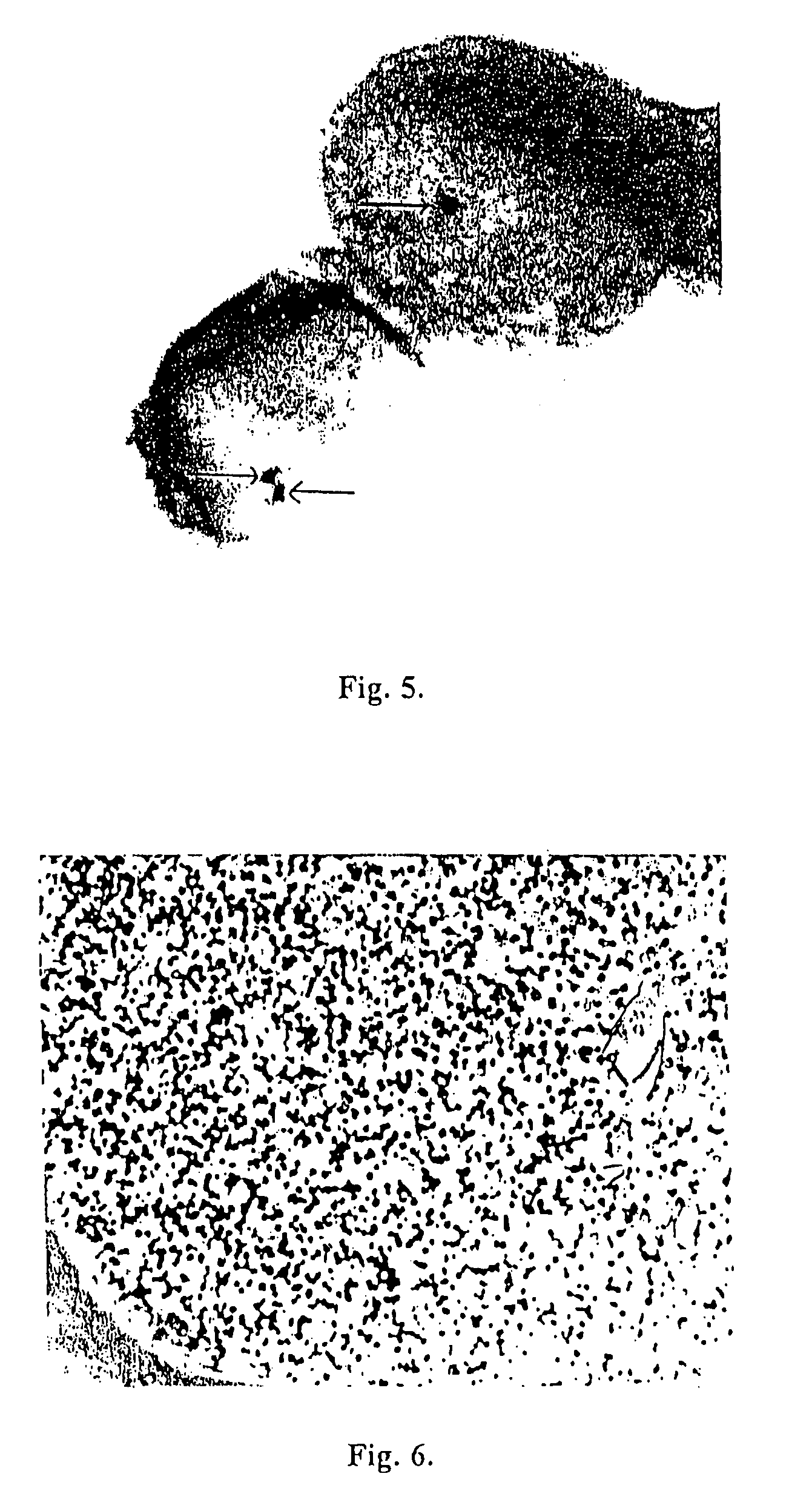Method for detecting a target molecule by metal deposition
a metal deposition and target molecule technology, applied in the field of metal deposition detection methods, can solve the problems of less popular type of detection, lower sensitivity than other enzyme methods, and the inability to detect the target molecule by itself, so as to achieve easy calibration of reaction rates, more sensitive detection, and the effect of inherent amplification steps
- Summary
- Abstract
- Description
- Claims
- Application Information
AI Technical Summary
Benefits of technology
Problems solved by technology
Method used
Image
Examples
example 1
Enzymatic Deposition of Silver Metal
[0184]One microgram of horseradish peroxidase was applied to a nitrocellulose membrane and allowed to dry. The membrane was then optionally blocked using 4% bovine serum albumin and washed. A solution containing 2.5 mg / ml hydroquinone and 1 mg / ml silver acetate in a 0.1 M citrate buffer, pH 3.8 was applied. Next, hydrogen peroxide was added and mixed to a final concentration of 0.03 to 0.06%. Silver deposition selectively occurred at the peroxidase spot as evidenced by a black product. No deposit occurred if the hydrogen peroxide was omitted.
example 2
Enhanced Enzymatic Deposition of Silver Metal; Pretreatment With Silver Ions
[0185]One microgram of horseradish peroxidase was applied to a nitrocellulose membrane and allowed to dry. The membrane was then optionally blocked using 4% bovine serum albumin and washed. A solution of 2 mg / ml silver acetate in water was applied for three to five minutes, then washed with water. A solution containing 2.5 mg / ml hydroquinone and 1 mg / ml silver acetate in a 0.1 M citrate buffer, pH 3.8 was applied. Next, hydrogen peroxide was added and mixed to a final concentration of 0.03 to 0.06%. Silver deposition immediately and selectively occurred at the peroxidase spot as evidenced by an intense black product. No silver deposit occurred if the hydrogen peroxide was omitted.
example 3
Enhanced Enzymatic Deposition of Silver Metal; Pretreatment With Gold Ions
[0186]One microgram of horseradish peroxidase was applied to a nitrocellulose membrane and allowed to dry. The membrane was then optionally blocked using 4% bovine serum albumin and washed. A solution of 0.1 mg / ml potassium tetrabromoaurate in water was applied for five minutes, then briefly washed with water. A solution containing 2.5 mg / ml hydroquinone and 1 mg / ml silver acetate in a 0.1 M citrate buffer, pH 3.8 was applied. Next, hydrogen peroxide was added and mixed to a final concentration of 0.03 to 0.06%. Silver deposition immediately and selectively occurred at the peroxidase spot as evidenced by an intense brown-black product.
PUM
| Property | Measurement | Unit |
|---|---|---|
| distance | aaaaa | aaaaa |
| diameter | aaaaa | aaaaa |
| pH | aaaaa | aaaaa |
Abstract
Description
Claims
Application Information
 Login to View More
Login to View More - R&D
- Intellectual Property
- Life Sciences
- Materials
- Tech Scout
- Unparalleled Data Quality
- Higher Quality Content
- 60% Fewer Hallucinations
Browse by: Latest US Patents, China's latest patents, Technical Efficacy Thesaurus, Application Domain, Technology Topic, Popular Technical Reports.
© 2025 PatSnap. All rights reserved.Legal|Privacy policy|Modern Slavery Act Transparency Statement|Sitemap|About US| Contact US: help@patsnap.com



